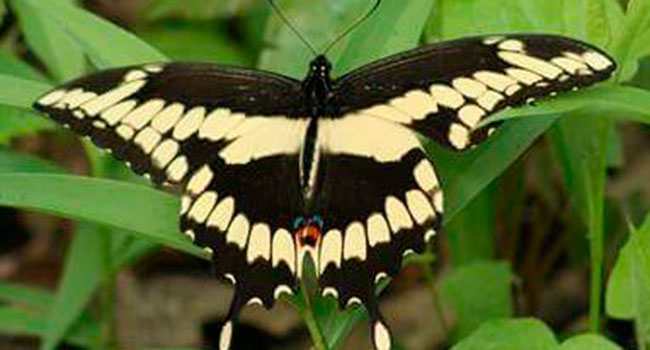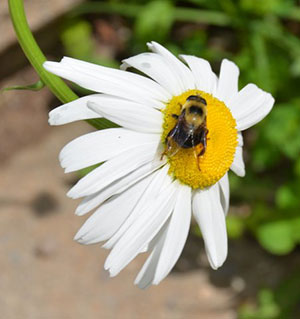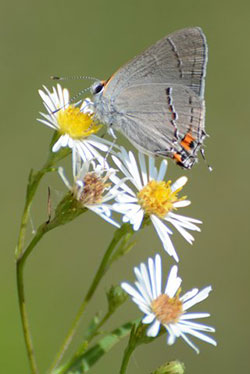
 We hear with alarming frequency that honey bees are in decline around the globe due to mysterious diseases, climate change, pesticides and habitat loss.
We hear with alarming frequency that honey bees are in decline around the globe due to mysterious diseases, climate change, pesticides and habitat loss.
But what of the other pollinators – solitary bees, bumblebees, pollen wasps, bee flies, ants, midges, hoverflies, butterflies, moths and beetles? How are they faring?
Pollinators don’t have to be tiny – even large critters can act as pollinators. Monkeys, birds, bats, possums, rodents, lemurs and lizards help pollinate plants as well.
Let’s deal with the vertebrates first. Many are in decline, not so much because they’re pollinators but more so because their habitat is being degraded or replaced globally. Bats are being hard hit by disease, while birds suffer from habitat loss, pesticides such as neonicotinoids and monoculture-based agriculture that limits foraging opportunities.
Likewise with the insects, the turn from small multi-crop fields to large monocultures has led to serious declines for most species of pollinators. Hedgerows are cut down and small patches of ‘weeds’ that formerly supported pollinators are replaced with row crops right to the edge of the field. Roadsides are cut by municipalities right when the flowers are in bloom and pollinators are most active.

Simply, there is little or no food for these important insects. The decline of the monarch butterfly was in the news for a couple of years as milkweed plants disappeared. This primary food source was no longer available so these important butterflies perished and their benefits to plant reproduction went with them.
Half of the bumblebee species in eastern North America are in decline and in southern Ontario, seven species found in surveys in the early 1970s are either absent or in decline 30 years later.
Thousands of species of pollinators are in trouble worldwide and in urgent need of assistance or they may disappear entirely.
Pollinating insects work in a variety of ways. Many insects pollinate plants simply by visiting them looking for nectar or pollen. Pollen is often inadvertently carried by bees and wasps on their bodies, legs and wings as they search for the nectar to produce honey or for other foods for their offspring.
Many pollinators are specialists, however, and actually have adapted their legs, mouth parts, and even body size and shape to match the characteristics of a host plant. Some are so specialized that a plant may rely on a single type of insect for its reproductive success (e.g. the yucca plant relies on the yucca moth). Some beetles eat pollen and as such cross-pollinate plants as they carry the scraps on their legs and antennae when they move between plants.
Some plants restrict what type of pollinators they permit – some have sticky reproductive parts that limit pollinators only to those that can hover over the flower. The reason for this is a bit unclear but may be to ensure that cross-pollination with undesirable but similar species doesn’t occur.

One interesting plant species that relies on carrion-seeking insects is the rafflesia. This large Asian plant smells like rotten meat and attracts insects that think there’s a carcass nearby. The flies that come accidentally pollinate the rafflesia and go home hungry for their efforts!
One species of orchid emits pheromones that mimic those produced by aphids. Predators of the aphids are then attracted to the fake odour and pollinate the plant by accident. Some orchids even have reproductive parts that look like female insects and the eager male insects try to mate with these fake females and then pollinate the plant instead.
And mosquitoes, which we think of primarily as nuisance biting insects, actually spend time pollinating plants. The female often takes a nectar meal before dining on our flesh.
So why do we care?
Pollinators are responsible for about one out of every three bites of food people eat. Without them, we wouldn’t have enough food and the world would truly starve.
So what can you do?
Plant a butterfly or pollinator garden. Build a bee house or simply don’t cut down those ‘weeds’ – let them grow and give the bugs a chance.
Visit www.beesmatter.ca or http://www.pollinator.org for some great ideas on how to save our pollinators.
Geoff Carpentier is a published author, expedition guide and environmental consultant. Visit Geoff online at www.avocetnatureservices.com, on LinkedIn and on Facebook.
Geoff is a Troy Media Thought Leader. Why aren’t you?
The views, opinions and positions expressed by columnists and contributors are the author’s alone. They do not inherently or expressly reflect the views, opinions and/or positions of our publication.
